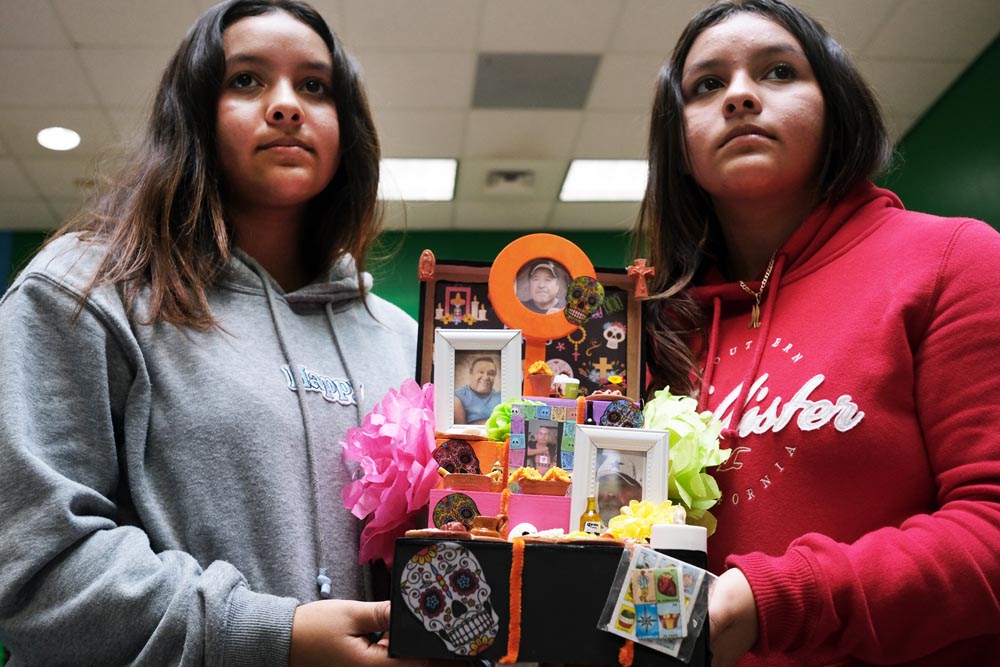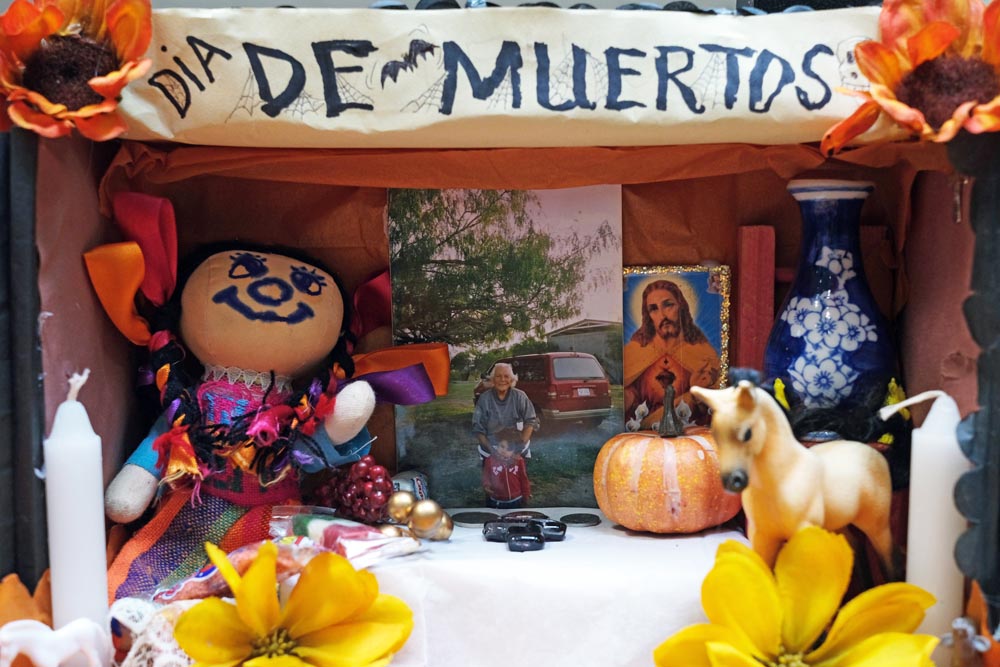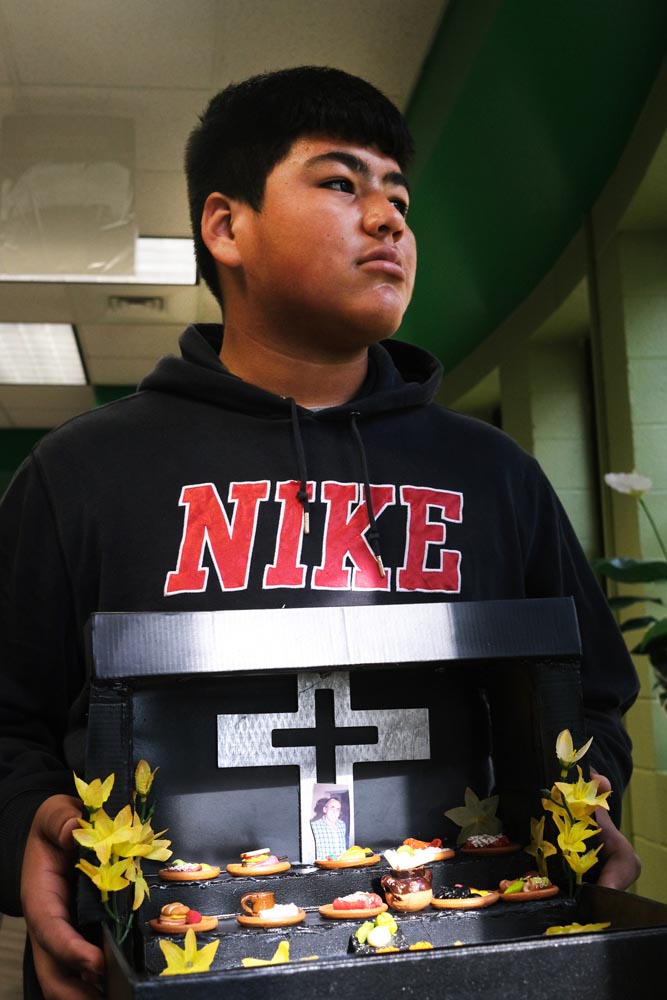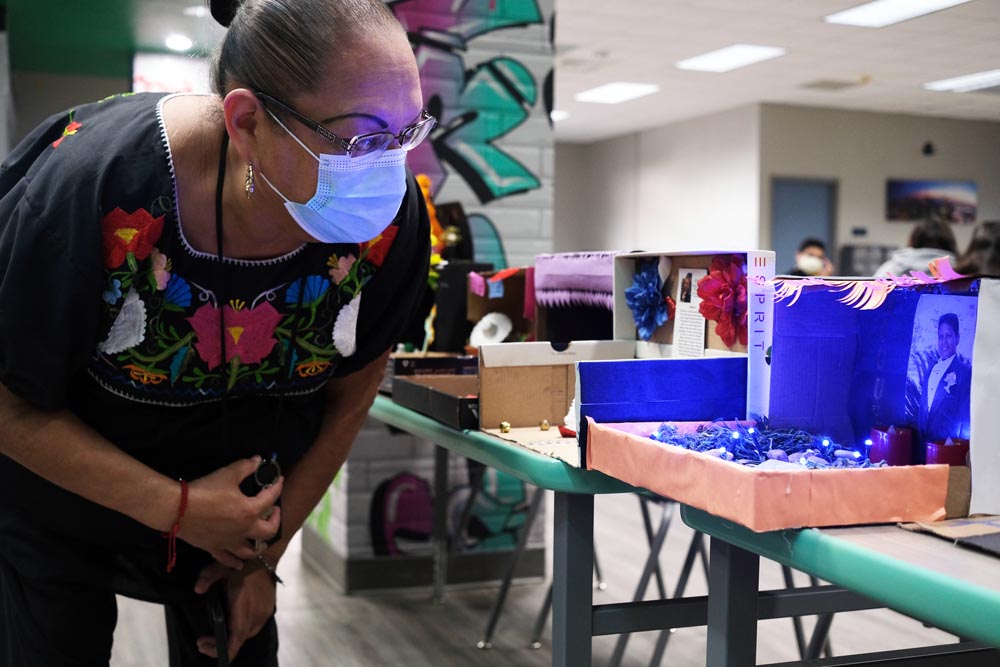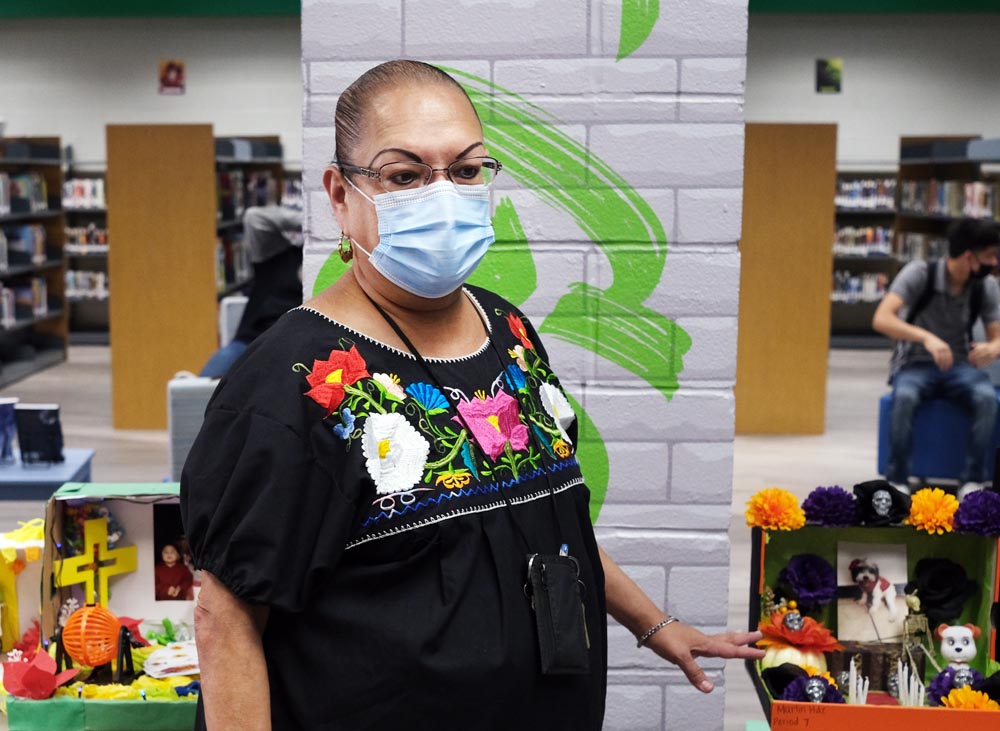Students in Diana Sanchez’s Spanish classes at Besteiro Middle School prepared altars for loved ones who have passed away to celebrate Day of the Dead and in the process learned things about their families and culture that they hadn’t known before.
Day of the Dead, Dia de los Muertos in Spanish, is celebrated in Mexico and other Latin American countries from Oct. 31 through Nov. 2 in a tradition that briefly invites departed souls back to the world of the living. Families prepare elaborate altars to celebrate family history and pay tribute to departed but not forgotten friends and relatives.
The holiday is celebrated in Brownsville, across the Rio Grande Valley and increasingly in other parts of the United States.
Sanchez, a longtime Spanish teacher at Besteiro, born and raised in Brownsville, said she taught about the holiday this year thinking it might be especially poignant because of the pandemic and because some of her students might not know about the holiday’s rich traditions.
The Disney animated film “Coco,” set in Central Mexico, helped out in that regard. Students were watching the film during Sanchez’s class on Tuesday.
“My objective was for them to get to know their families,” Sanchez said. “I had parents calling me excited about the project. Whole families got involved, brothers and sisters, mothers and fathers, and the students had a part.” The only requirement was a shoe box to get started.
Seventh-grade twins Marely and Maria Ornelas proudly showed off the altar they made for their grandparents.
Included were “favorite things they used to eat, corn, tamales, things like that,” Marely said. “It was a chance for them to go out and be with the living,” Maria said.
Sanchez said there were discussions about the levels the deceased had to travel to visit the living, as well as a conversation about whole families barbecuing at cemeteries in Mexico while “reliving that time when the person was alive.”
The altars are in the Besteiro library, where Sanchez plans to take a picture of each student with their altar before returning them next week.
Isiel Paz did his altar about his great-grandfather who he “barely even knew” while he was alive but found out about doing the project.
“He loved to eat tamales. The best thing is that I got to know him a little bit more. He was my mom’s father,” Isiel said.
Another student, Miguel Gamez, did his altar about his uncle, “who was very well known here at Besteiro,” Sanchez said, adding that she recognized the uncle when Miguel included his photo in his altar.
“He came on very strong at first, he threatened me,” she said of the uncle. “But in the end he was my best friend. I was a floating teacher and he helped me.”
“It takes me to reprimand the student, call the parents and then they come up with this,” Sanchez said indicating the altars with a sweep of her hand. “It was like the brother, mom, dad, everybody took part in it. I told the kids this is something to be proud of. This is your culture, your family. We don’t understand how rich our culture is.”

